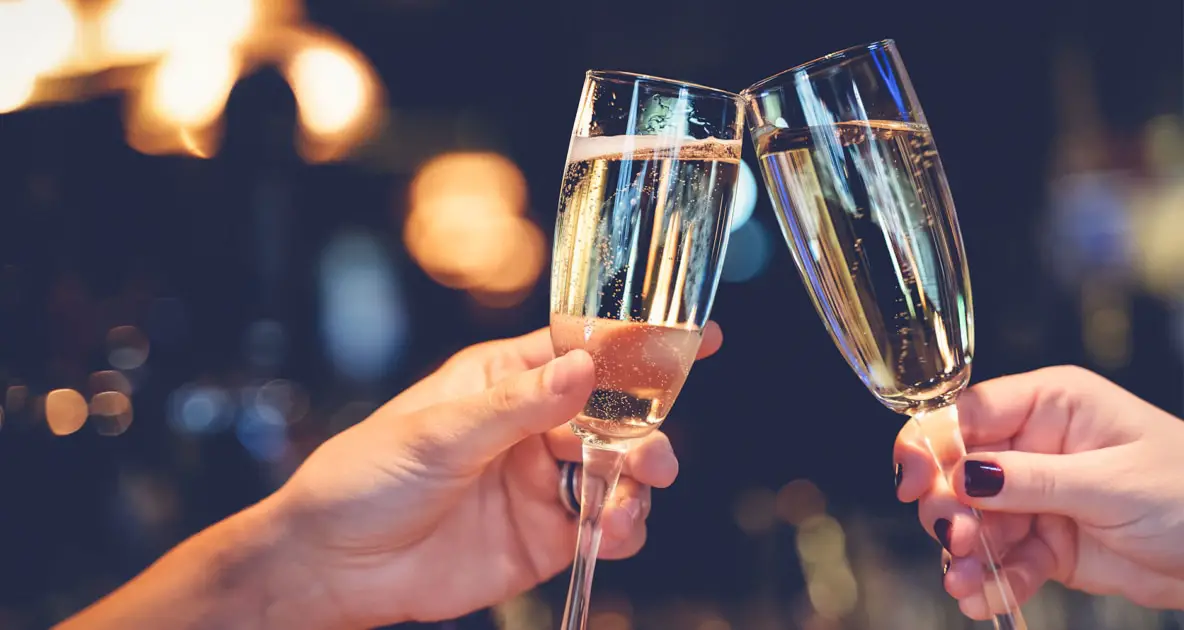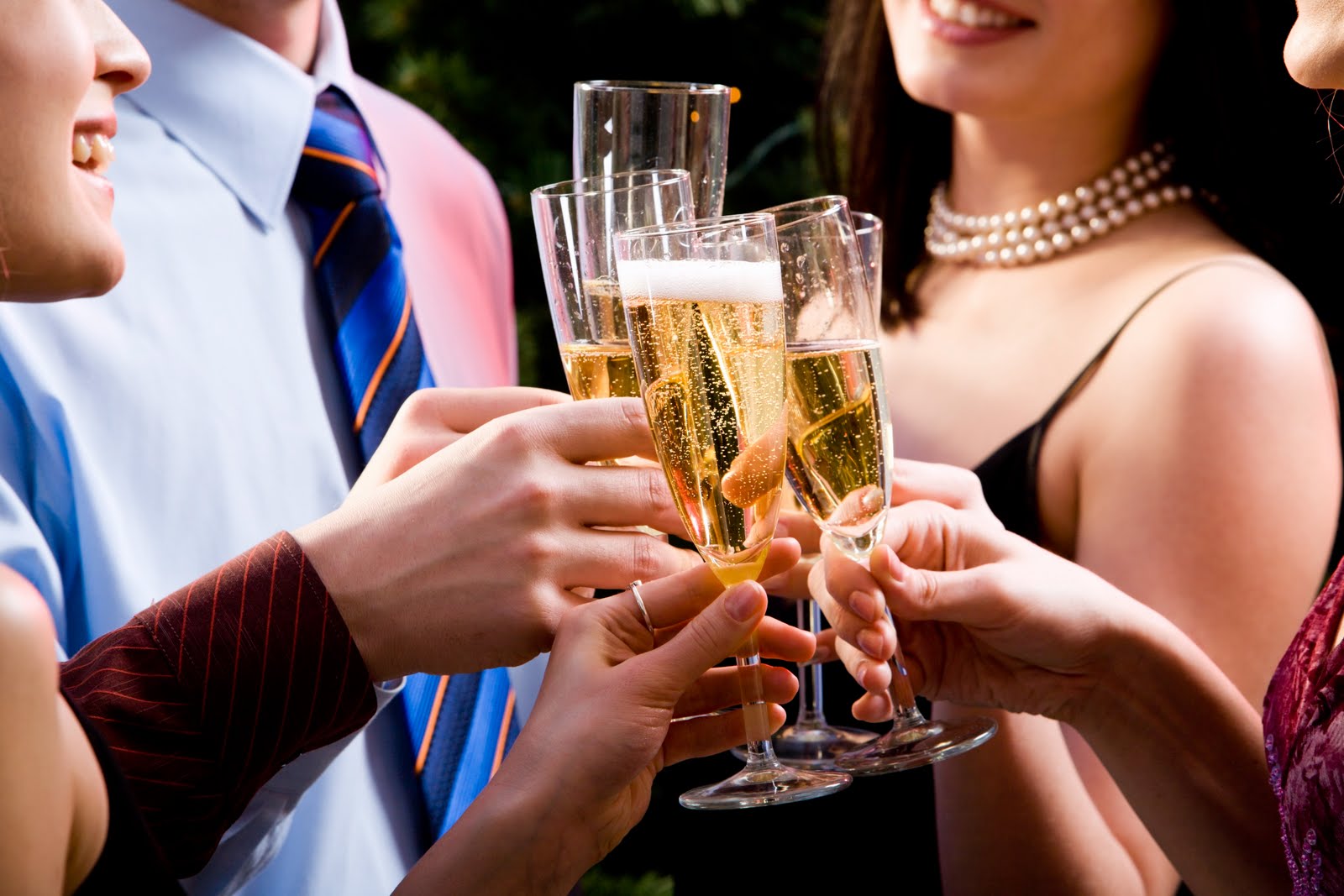Amidst the clinking of glasses and the vibrant cascade of bubbles, champagne holds an esteemed position as the beverage of celebration and luxury. But beneath its effervescent charm lies a question that has intrigued many: can champagne truly lead to the same level of intoxication as its more robust counterparts?
This article embarks on an enlightening journey, delving into the intricacies of champagne’s alcohol content, the complex factors that shape intoxication, and the enigmatic relationship between its bubbly nature and alcohol absorption. v
So, let us raise our flutes and dive into this exploration of the world of champagne and its potential to intoxicate.
Table of Contents
ToggleChampagne’s Alcohol Content

Before going on to the results, let’s first look at the causes. An important factor in determining a beverage’s potency is its alcohol by volume (ABV). Compared to other alcoholic beverages like vodka or whiskey, which can have an ABV of up to 40% or more, champagne typically has an alcohol by volume (ABV) between 11 and 12%. Champagne is closer to the milder end of the alcohol spectrum, suggesting a more subdued impact on our senses.
Factors Affecting Intoxication
The alcohol level of a beverage does not alone determine intoxication. Body weight, metabolism, tolerance, and dietary intake are important factors as well. Your body weight and metabolism influence how quickly alcohol is processed, while your tolerance level develops over time with regular alcohol consumption. Additionally, consuming food alongside alcohol can slow down its absorption, potentially reducing the likelihood of rapid intoxication.
Body Weight and Metabolism
Imagine alcohol as a guest at a lively party within your body, its journey choreographed by your unique physiology. Your body weight and metabolism take center stage here. Lighter individuals generally experience a more pronounced effect from alcohol because their bodies have less mass to distribute the alcohol, leading to higher concentrations in the bloodstream. Additionally, metabolism dictates how quickly your body processes alcohol. Faster metabolizers might feel the effects of alcohol more swiftly, while slower metabolizers have a more prolonged dance with intoxication.
Developing Tolerance
Tolerance is the seasoned dancer of the group showing up after consistent practice. Regular alcohol consumption over time can lead to an increased tolerance level. This means that those who frequently partake in a drink might require more alcohol to experience the same level of intoxication as someone who drinks less frequently. Tolerance involves the body adapting to the presence of alcohol, becoming more efficient at breaking it down and dampening its immediate impact.
Food Consumption as a Buffer
Imagine that alcohol enters your bloodstream like a spirited guest storming into a room. Now, consider food as the calming host, guiding this guest towards a more graceful entrance. Consuming food alongside alcohol can slow down its absorption and subsequent effects.
This is because food occupies space in your stomach, reducing the volume available for alcohol absorption. Additionally, certain foods might contain components that interact with alcohol, further influencing its effects. The result? A smoother, more controlled entrance for alcohol into your bloodstream, reducing the likelihood of rapid intoxication.
Intoxication from Champagne
Now, let’s address the burning question: can champagne really get you drunk? The answer lies in moderation and individual factors. While champagne’s alcohol content is relatively low compared to stronger spirits, excessive consumption can still lead to intoxication. Your body’s response to alcohol depends on the amount consumed and your personal factors. So, while it might take a larger volume of champagne to induce intoxication compared to a shot of whiskey, it’s still possible if consumed irresponsibly.
Your body’s response to alcohol is a symphony conducted by an ensemble of variables. The amount of champagne consumed takes center stage, dictating the tempo of the performance. But it’s not a solo act; personal attributes such as metabolism, body weight, and even genetics harmonize to influence the outcome.
It’s true that a larger volume of champagne might be required to reach the same level of intoxication that a single shot of whiskey could induce. This contrast exemplifies the inherent nature of champagne’s elegance. It beckons you to savor the experience, inviting you to linger over each glass, relishing the taste and the atmosphere it conjures.
However, a crucial element in this symphony is responsibility. The allure of champagne can blur the lines between indulgence and excess, especially in the midst of celebrations. An extra glass here, a refill there, and suddenly the delicate bubbles transform into an unexpected whirlwind. This transformation is not unique to champagne; it’s a dance every alcoholic beverage is capable of leading.
Champagne’s Bubbly Effect

The effervescence that defines champagne comes from its carbonation, creating those delightful bubbles that tickle your palate. But does this bubbly nature affect alcohol absorption? It’s believed that carbonation leads to faster absorption of alcohol. The theory suggests that carbon dioxide gas in champagne could increase the pressure in your stomach, potentially pushing alcohol into your bloodstream more rapidly. However, individual responses to this effect can vary widely, so it’s not a definitive rule.
Recognizing Intoxication and Its Effects
Knowing when you’ve had one glass too many is essential for responsible drinking. Signs of intoxication include impaired judgment, slowed coordination, and changes in behavior. Individual tolerance to alcohol’s effects also plays a role. Some people might appear unaffected after a few glasses, while others could feel the impact sooner. Understanding your own limits and gauging your body’s response is crucial to maintaining control over your alcohol consumption.
Conclusion
As our adventure comes to a close, we’ve seen that champagne, with its enticing bubbles and graceful beauty, may undoubtedly cause intoxication if consumed in excess. Its lower alcohol content does not shield it from the negative effects that alcohol can have on our bodies and thoughts. The keys, as always, are moderation and self-awareness. So, the next time you raise a glass of champagne to a special occasion, keep in mind the delicate balance of enjoyment and restraint.

I am a passionate beer connoisseur with a deep appreciation for the art and science of brewing. With years of experience tasting and evaluating various beers, I love to share my opinions and insights with others and I am always eager to engage in lively discussions about my favorite beverage.

















0 Responses
I appreciate the practical advice you’ve given here.